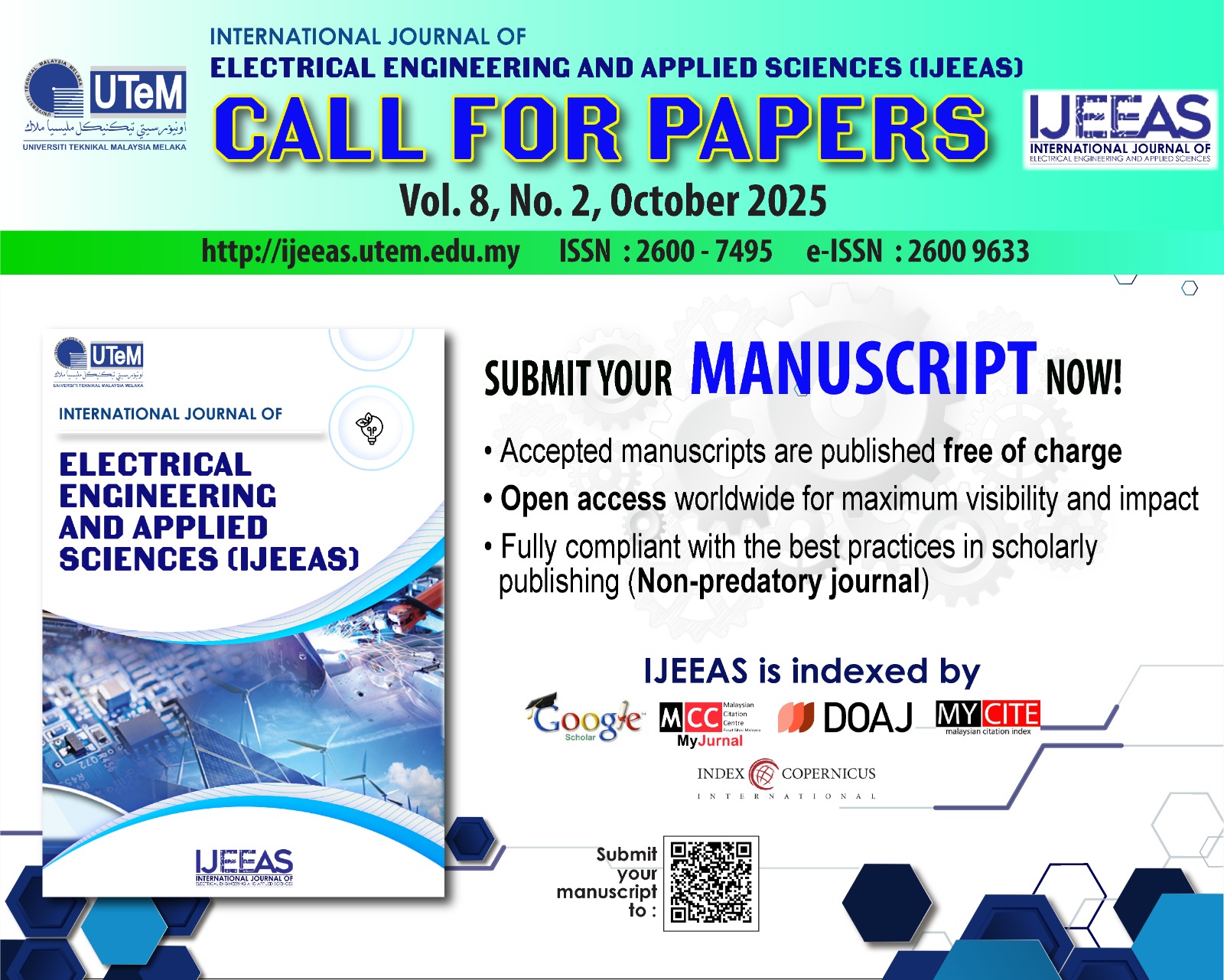Analysis of The Shape of Pressed Tarts from Image Processing
Keywords:
Tart classification, food manufacturing, tart pressing, edge detection, segmentationAbstract
Monitoring quality of food processed in manufacturing industries is gaining its importance to ensure marketability in local and international markets. Food processed from manufacturing industries is usually graded in terms of quality; a shape defect would be regarded as a non-quality product and may be rejected or given away. In a semi or fully automated food manufacturing system, one of the most commonly used techniques is computer vision. This can be implemented by using a camera with a certain resolution and image processing to display results obtained. This project applies image processing technique to differentiate good and defective tart, according to its shape. The mold platform moves along with the conveyor by first reaching a pressing location (pneumatic cylinder) and later arriving under the view of the camera. A Raspberry Pi was used to connect the conveyor motor, pneumatic cylinder and the ultrasonic sensors. From the image acquired by the USB camera, the images are processed by edge detection and the number of circles identified for the tart and centroid position has been analyzed. The results show that a quality tart shape has number of circles less than 10, for the distance of the camera of 12, 15 and 18cm, with the 15cm distance from the camera gives a more accurate reading.Downloads
References
Steve D., Ph.D. (n.d.). Robotics and Automation for the Food Industry.[Online],at:https://www.foodsafetymagazine.com/magazine-archive1/augustseptember-2014/ robotics-and-automation-for-the-food-industry/
Chris C. “How Robots are changing the food Industry and Improving Fulfillment.”[Online], at https://www.foodlogistics.com/3pl-4pl/article/12002261/ho w-robots-are-changing-the-food-industry-and-improving-fulfillment.
D. Trientin, B. Hidayat, S. Darana, Beef freshness classification by using color analysis, multi-wavelet transformation, and artificial neural network, International Conference on Automation, Cognitive Science, Optics, Micro Electro-Mechanical System, and Information Technology (ICACOMIT), pp. 181-185, Bandung, Indonesia, October 2015.
S.R. Rupanagudi, B.S. Ranjani, P. Nagaraj, V.G. Bhat, A cost effective tomato maturity grading system using image processing for farmers, 2014 International Conference on Contemporary Computing and Informatics (IC3I), pp. 7-12, Mysore, India, November, 2014.
B. Mahale, & S. Korde, Rice quality analysis using image processing techniques, International Conference for Convergence for Technology, Pune, India, April 2014
M. M. R Dahapute,. K-mean Clustering for Segmentation of Irregular Shape Fruit Images under Various Illumination. International Conference on Modern Trends in Engineering Science and Technology (ICMTEST 2016), Vol. 2 (Issue 5), pp 1-5, Shahapur, Maharashtra, India, May 2016.
C. Sekhar, B. Tudu, and C. Koley. “A Machine Vision Technique for Grading of Harvested Mangoes Based on Maturity and Quality.” IEEE Sensors Journal, Vol. 16 (Issue 16): 6387-6396, August, 2016
L. B. Gama e, C. W. de Silva, and R. G. Gosine. Statistical Pattern Recognition for Cutter Positioning in Automated Fish Processing. Department of Mechanical Engineering University of British Columbia Vancouver, Canada.1993 IEEE Pac Rim
Downloads
Published
How to Cite
Issue
Section
License
Authors who publish with this journal agree to the following terms:
- Authors retain copyright and grant the journal right of first publication with the work simultaneously licensed under a Creative Commons Attribution License that allows others to share the work with an acknowledgement of the work's authorship and initial publication in this journal.
- Authors are able to enter into separate, additional contractual arrangements for the non-exclusive distribution of the journal's published version of the work (e.g., post it to an institutional repository or publish it in a book), with an acknowledgement of its initial publication in this journal.
- Authors are permitted and encouraged to post their work online (e.g., in institutional repositories or on their website) prior to and during the submission process, as it can lead to productive exchanges, as well as earlier and greater citation of published work (See The Effect of Open Access).







